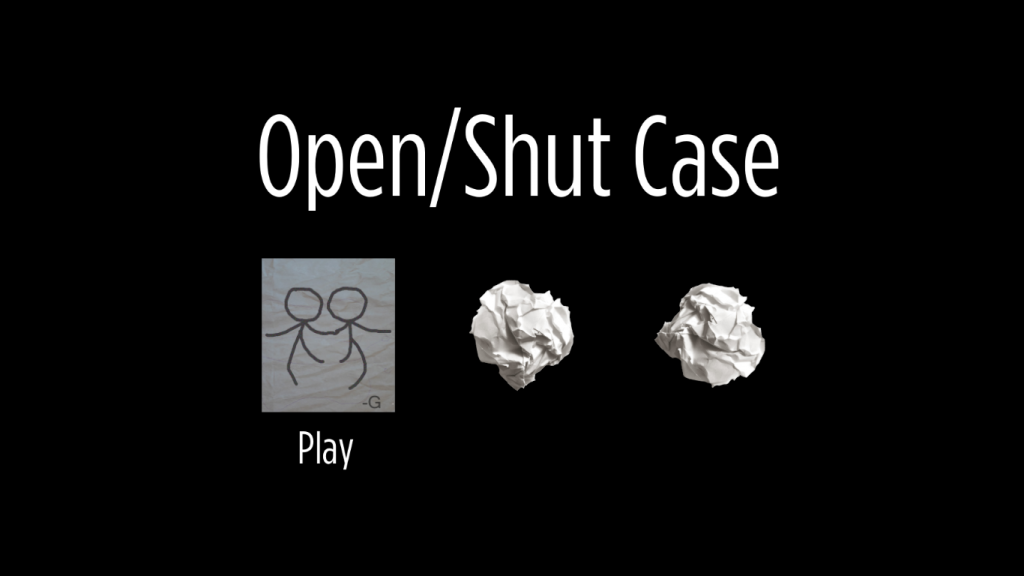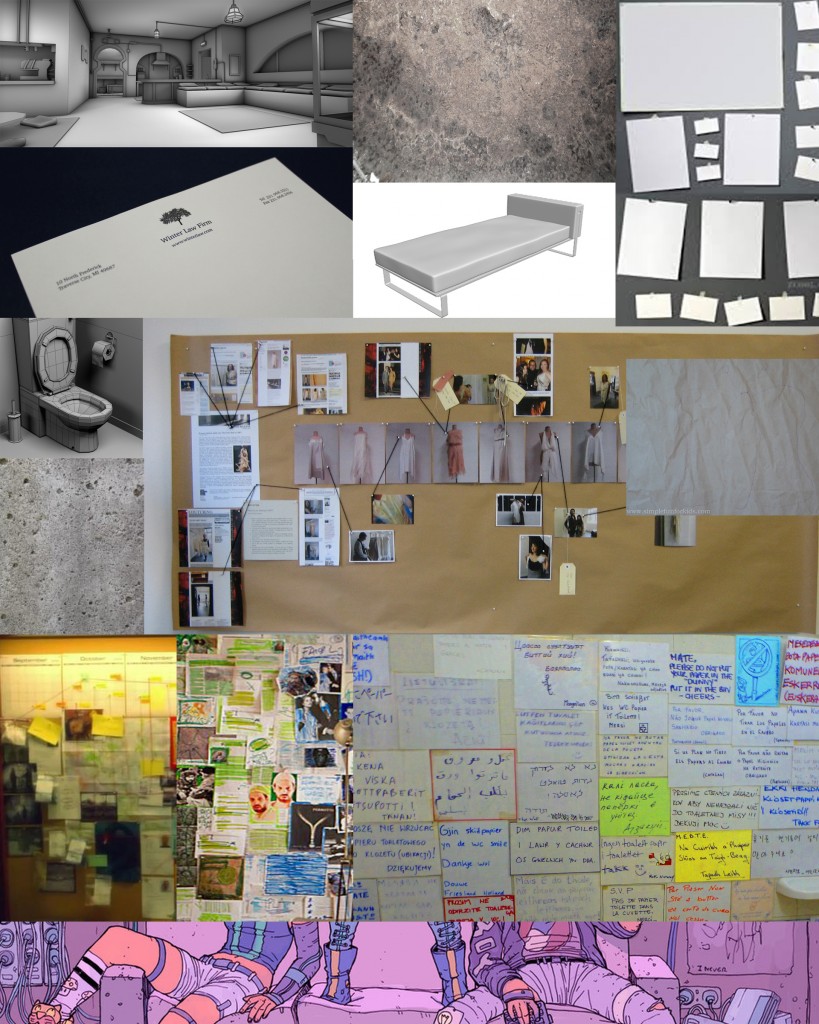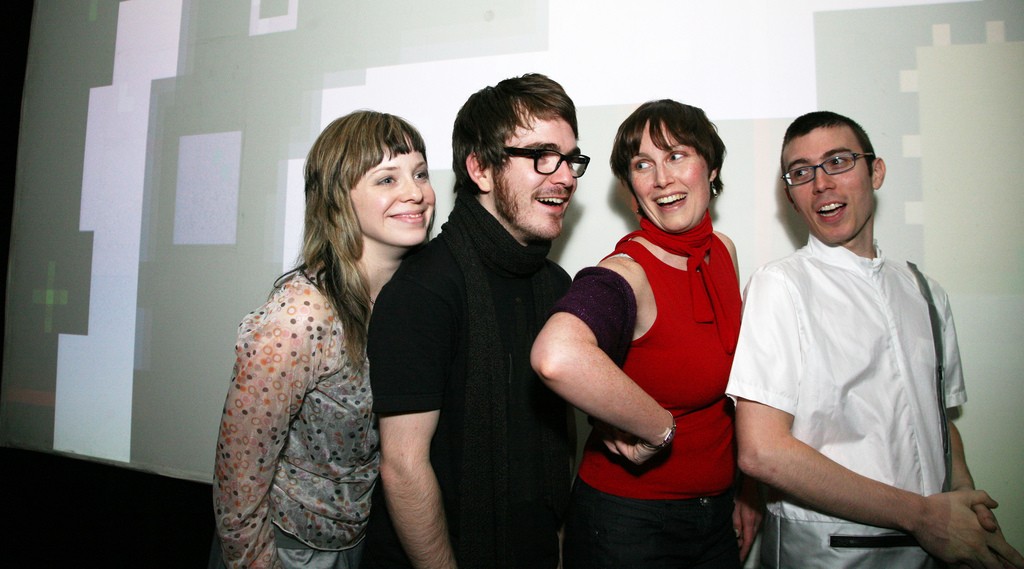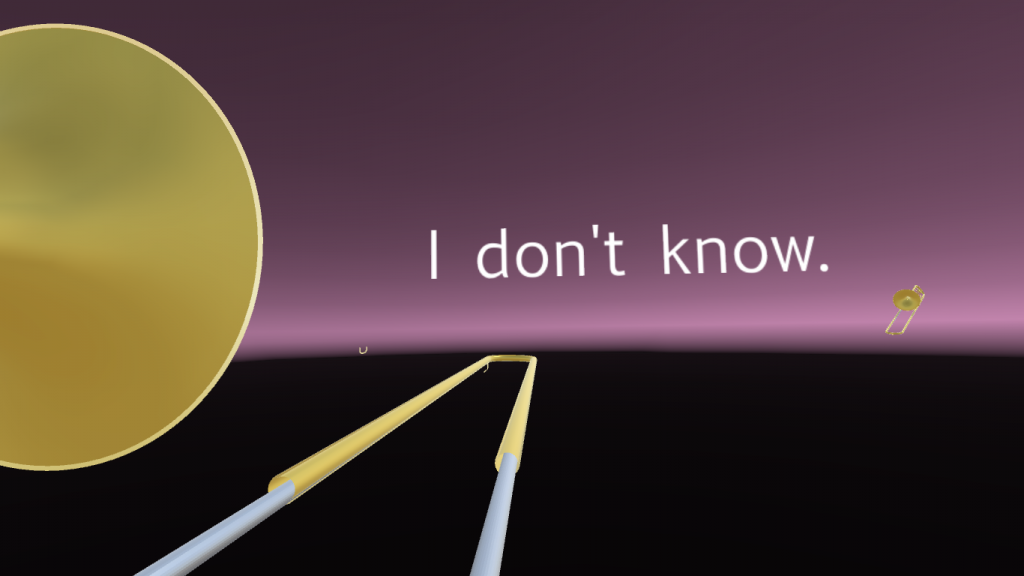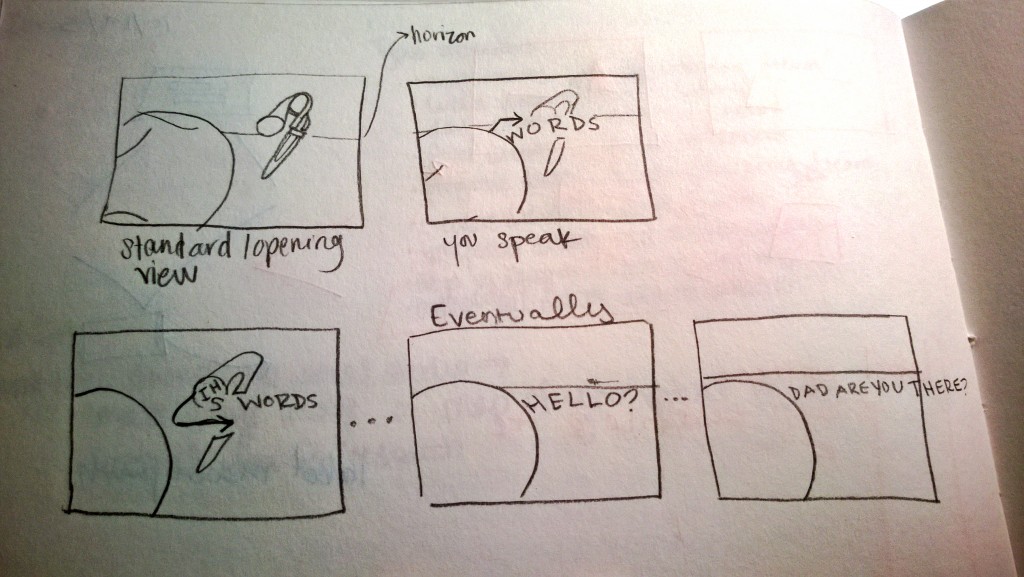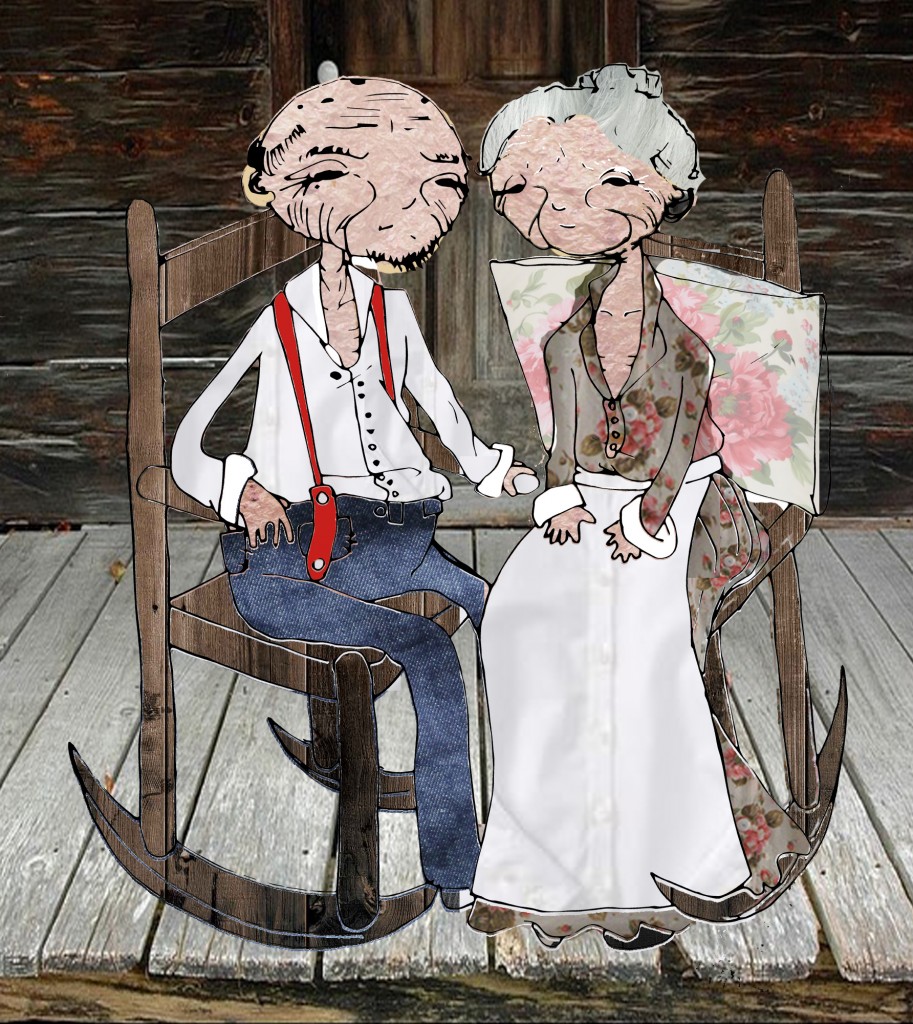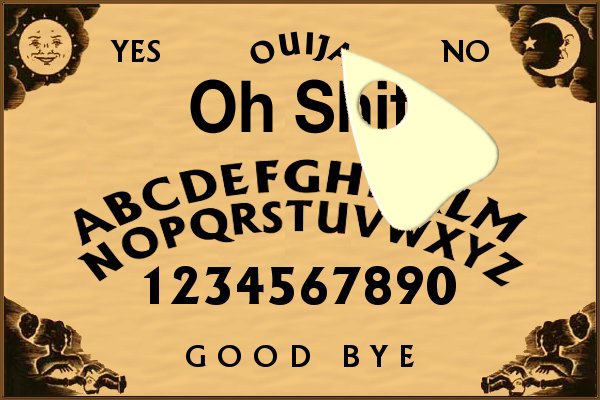Working Title: Open/Shut Case
An exploratory, narrative driven game in which the player must sift through the documents of their own life the find their identity, crime, and motivation. Confined to an isolation cell after committing a sensationalized murder, the player must spatially chronicle piece smuggled in documents from family, attorney, and past self to find their version of truth. These spatial arrangements of evidence, the links between media speculation and reality, may form the player’s confession or release them from imprisonment.
I want to make an experience that is slow and thoughtful, and that relates to my own body of work (in theme.) So, in this game, the narrative will center around a female detective who finds herself in prison over the death of her husband. The player’s role will be rather passive, as this is a game in which the player’s main activity is reading and interpreting connections based on the baggage they bring to the story. The details of the crime will be addressed from different sources, all of which with their own motivations for crediting or discrediting the player character, but (in a narrative sense) serving to obfuscate the truth. The player’s passiveness will be explained through her emotional state, and the atmosphere of the game will reiterate this. Visually, the cell will be drab and unsaturated while the documents will be colorful and busy. All of room will be 3D, while the documents will have all 2D renderings. The documents themselves will have subtle color coding indicating possible lines of connection. The player will be able to use their daily rations to place these documents on the wall of their cell, draw lines between them, or to mark the passage of the day. These lines of connection are meant to serves as an in-game record of where the player has been. They are the manifestation of the player in the world.
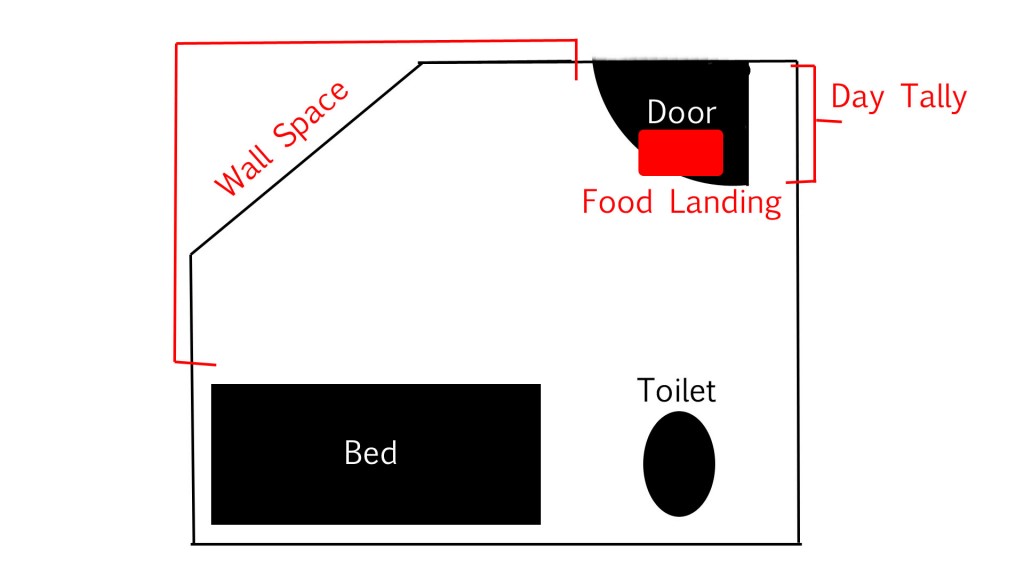
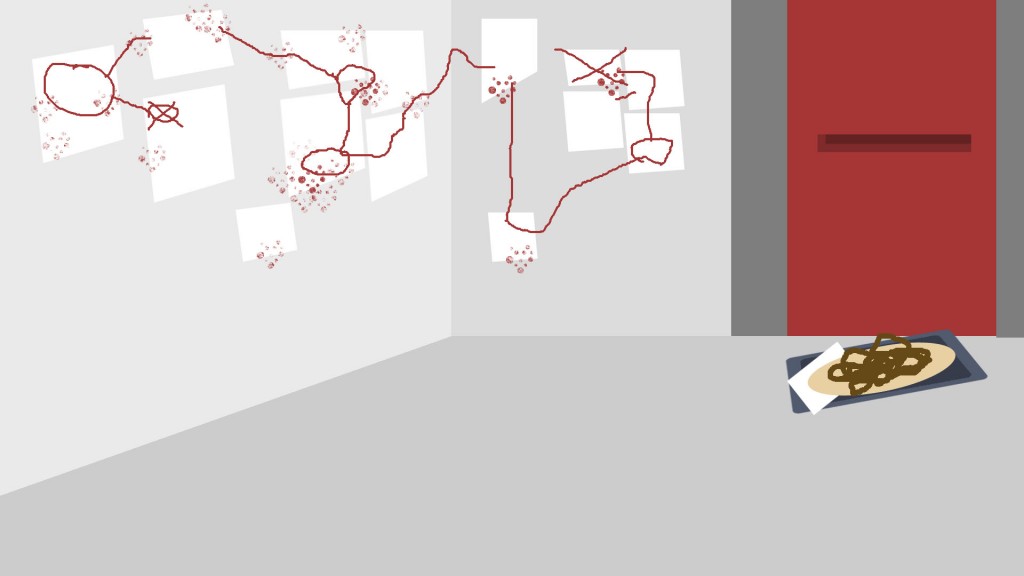
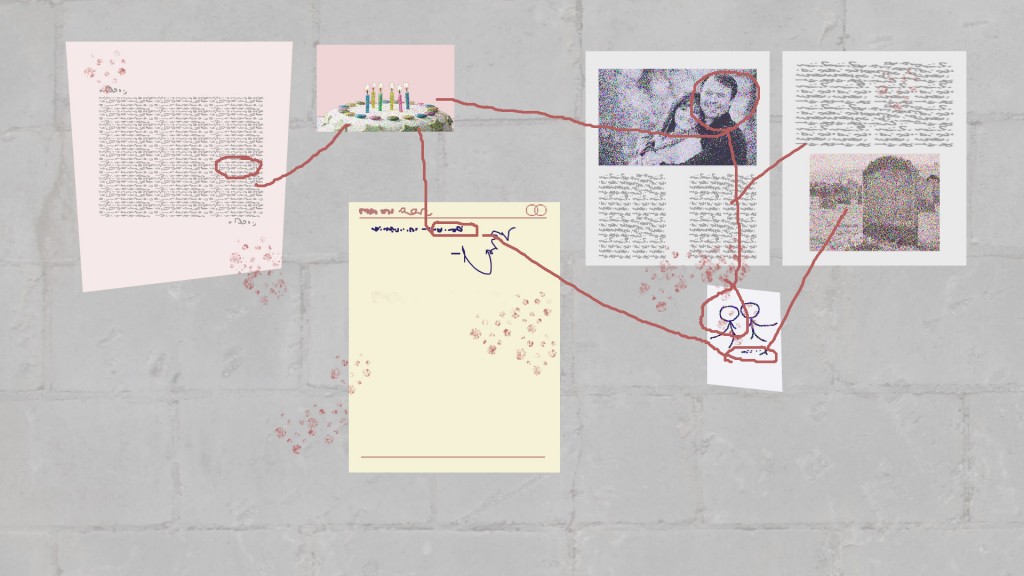
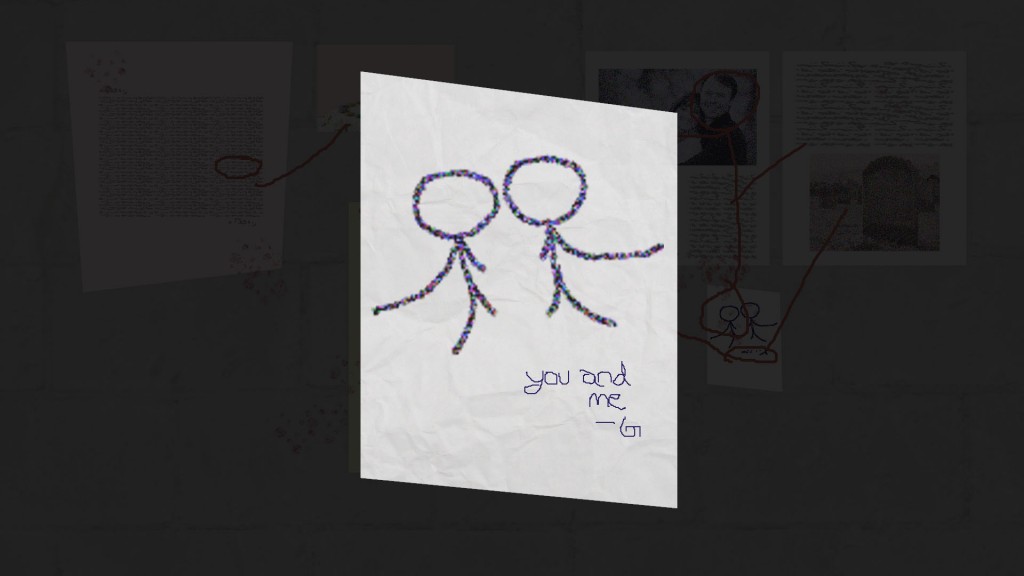
Game References:
1. Herstory: The player drives the narrative: all of it is laid out before them and they make the connections. When I played the game, I ended with a pile of sticky notes indicating which terms I had searched. I want a player to feel that same depth of interest in the narrative of this game.
2. Gone Home: The use of static text and images to create a sense of discovery in the player. Though the great narrative is narrated, its up to the player to find the subtlety of the narrative in the details.
3. Papers Please: Documents that hold information about a person, and the power of the player to judge that person based on that brief encounter.
Non Game References:
1. Thin Blue Line, Errol Morris: That external forces, particularly the media, can retroactively change the outcome of a crime.
2. Serial (the podcast): That media can change public opinion about a crime, and attempt to change the outcome (and fail.)
3. Orange is the New Black: Setting, politics, and environmental atmosphere. Not so much the humor, narrative structure, hope/fear cycle, sensationalism, or tone.
